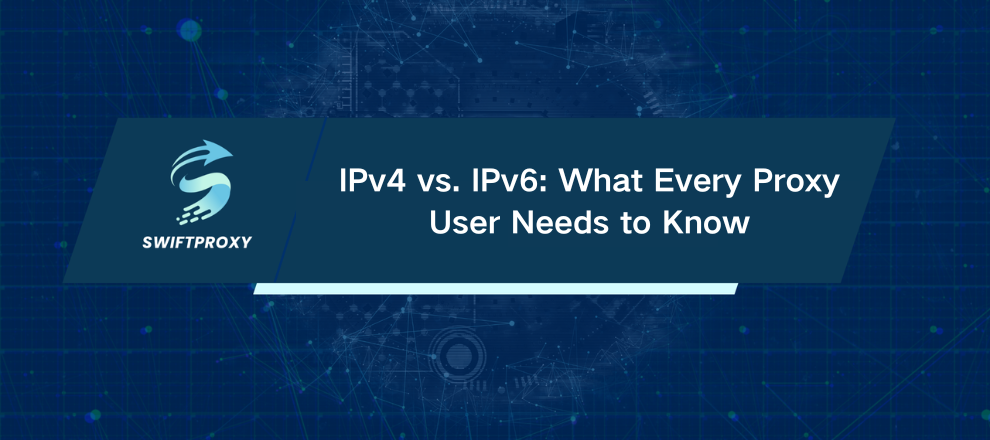IPv4 vs. IPv6: What Every Proxy User Needs to Know

IP addresses are the backbone of the internet. Without them, your devices wouldn't know where to send or receive data. Think of an IP address like your device's street address—but in the digital world. Every packet of information needs that address to reach its destination.
Understanding IPv4 and IPv6
Right now, two versions of IP addresses rule the internet: IPv4 and IPv6. Both get the job done, but they're built differently and have very different capabilities.
IPv4
IPv4 has been around since the 1980s. It uses a 32-bit system, giving us about 4.3 billion unique addresses. That used to be more than enough. But with billions of devices online today, we hit that limit years ago.
IPv4 can't keep up. The internet ran out of free IPv4 addresses back in 2011. The fix? Workarounds like NAT (Network Address Translation) let multiple devices share one IP address. Handy, but it's a patch, not a fix.
IPv6
IPv6 was created to fix IPv4's address crunch. It uses 128 bits — that's a mind-blowing number of addresses. Think 340 undecillion unique IPs. Yeah, you read that right. It's basically infinite for our needs.
IPv6 isn't just about more addresses. It's cleaner, simpler, and built for modern networks. Auto-configuration means less setup hassle. Plus, it ditches NAT, allowing devices to connect directly—faster and more securely.
What Sets IPv4 and IPv6 Apart
Address Size and Format: IPv4 addresses look like 192.168.1.1; IPv6 looks like 2001:0db8:85a3:0000:0000:8a2e:0370:7334.
Configuration: IPv4 usually needs manual or DHCP setups; IPv6 often configures itself automatically.
Routing Efficiency: IPv6's streamlined header boosts speed and performance.
Network Address Translation: IPv4 depends on NAT; IPv6 does away with it.
Communication Methods: IPv4 uses broadcast messaging—flooding all devices in a network. IPv6 switches to smarter multicast and anycast methods.
Mobile Networks: IPv6's design suits mobile devices better.
These aren't just technical details. They directly impact how your proxies work, how fast your data travels, and how reliable your connections are.
Which Should Proxy Users Bet On
IPv6 is the future. It offers better security, endless addresses, and smoother connectivity. But the internet isn't ready to flip the switch overnight.
Most sites and networks still rely on IPv4. Switching everything at once would break the web. That's why both IPv4 and IPv6 run side-by-side today—this is called dual-stack. It's the bridge we need to keep things running smoothly while moving forward.
For proxy users, this means your provider must support both protocols. You don't want to be stuck on the wrong side of the IP divide.
What It Takes to Make IPv6 Work for You
Here's what you need:
Operating System: Modern Windows, macOS, Linux, iOS, and Android all support IPv6 natively.
IPv6-Compatible Router: Check your router specs. Older models may need replacement or firmware updates.
ISP Support: Your internet provider has to enable IPv6 on their end. Without this, your devices can't use IPv6 no matter what.
The Bottom Line
IPv6 is not just a nicer version of IPv4. It's a necessary evolution—fixing decades-old problems and future-proofing the internet. But the transition won't happen overnight.
Proxy users, especially those relying on geo-targeting, web scraping, or high-volume data tasks, must navigate a mixed landscape. Providers who offer robust support for both IPv4 and IPv6 will keep you connected without hiccups.

















































